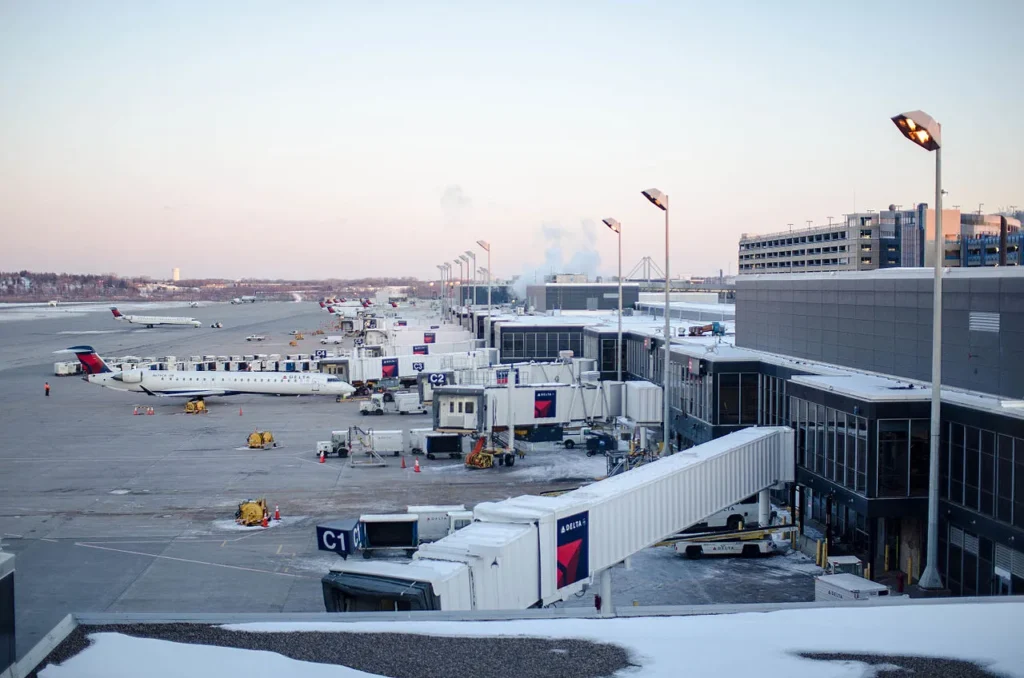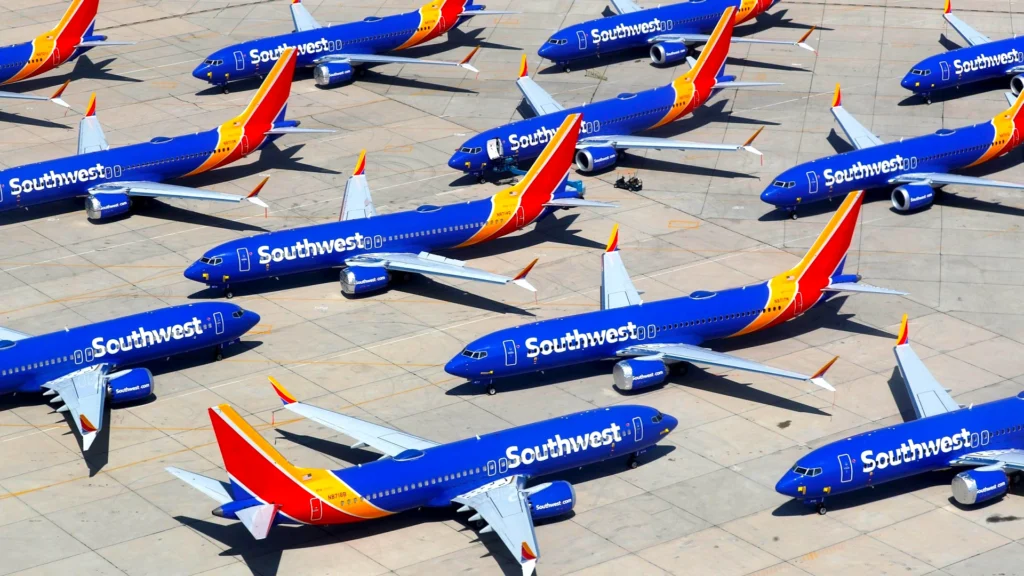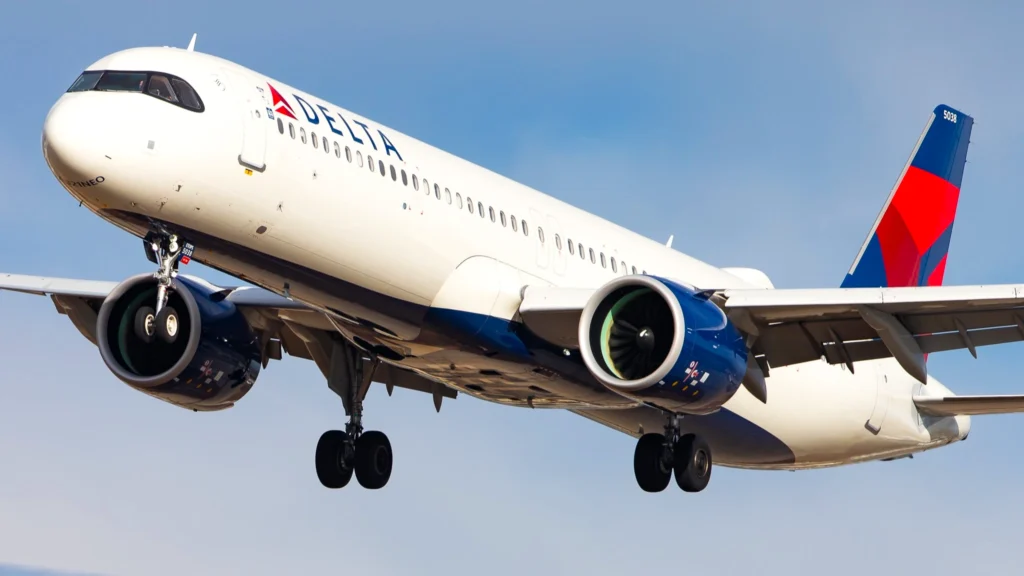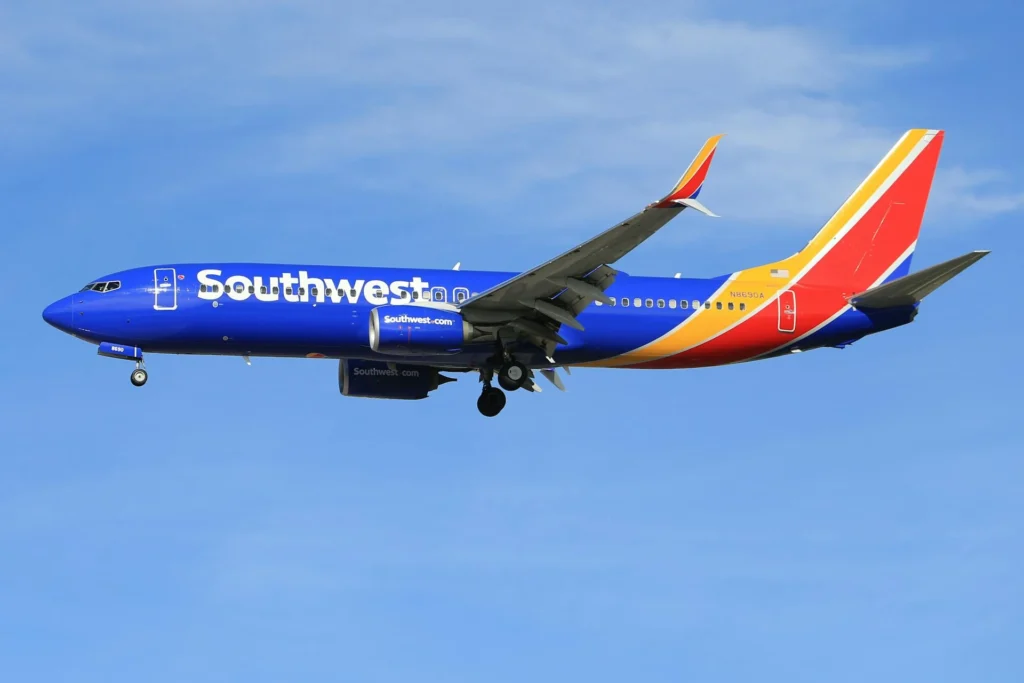
Аустин- Delta Air Lines (DL) расширяет свою деятельность в международном аэропорту Остин-Бергстром (AUS), обслуживая 29 направлений. Это расширение усиливает присутствие Delta, поскольку она конкурирует за долгосрочное доминирование в Остине.
Southwest Airlines (WN), которая уже возглавляет аэропорт с наибольшей долей рейсов и мест, сообщила, что в ответ она может увеличить более 200 ежедневных вылетов в AUS. Битва подчеркивает жестокое соперничество, формирующее будущее авиаперелетов Остина.
 Фото: Международный аэропорт Остин-Бергстром
Фото: Международный аэропорт Остин-БергстромЮго-запад против расширения дельты
В настоящее время Delta Air Lines осуществляет рейсы по 25 направлениям из Остина и вместе со своими региональными партнерами контролирует 22% рейсов и 19% доступных мест.
Это делает Delta 2-м по величине перевозчиком аэропорта после Southwest Airlines, на долю которого приходится 39% рейсов и 41% мест в AUS.
Оба перевозчика позиционируют себя в качестве якорных арендаторов в новом договоре аренды и использования аэропорта, связанном с запланированным расширением зала.
Delta открыто заявила о своей цели достичь размера текущей операции Southwest в Остине. В то же время Юго-Запад показал потенциальный рост до 50%, что подчеркивает растущий спрос города на деловые и туристические поездки.
Southwest Airlines (WN) генеральный директор Боб Джордан публично предположил, что AUS может в конечном итоге стать крупнейшей авиакомпанией в Техасе, а количество рейсов увеличится со 130 в день до более 200.
Наблюдатели отрасли отмечают, что, хотя эта амбиция сигнализирует о намерении, она также может представлять собой конкурентное позерство.
 Самолеты Delta Air Lines припаркованы в аэропорту MSP
Самолеты Delta Air Lines припаркованы в аэропорту MSPСтратегическое позиционирование
Большая часть соревнований в Остине сосредоточена на доступе к воротам, а не на непосредственном пассажирском спросе. Авиакомпании часто обеспечивают как можно больше ворот с минимальным обслуживанием, не позволяя конкурентам расширяться.
Например, некоторые аэропорты позволяют перевозчикам поддерживать контроль над воротами всего с 2 или 3 рейсами в день. Напротив, полностью используемые ворота могут выполнять от 8 до 10 рейсов в день.
Эта стратегия создает видимость агрессивной экспансии, в то же время в первую очередь ограничивая конкурентов.
Эта игра подчеркивает основную стратегию: доминировать в инфраструктуре аэропортов, чтобы обеспечить долгосрочное преимущество, даже если текущие операции не соответствуют объявленным планам роста.
 Фото: ur-1988 | Кредиты Создателю
Фото: ur-1988 | Кредиты СоздателюВызовы для Southwest Airlines
В то время как Юго-Запад пользуется значительным масштабом в Остине, его Боинг Флот 737 ограничивает возможность запуска дальнемагистральных или трансокеанских услуг.
В отличие от Delta, он не может выполнять беспосадочные рейсы на Гавайи или в Европу из Остина. Более того, недавние меры по экономии средств Southwest, такие как сборы за сумки, истекающие кредиты и девальвация очков, замедлили его рост и ослабили его привлекательность по сравнению с прошлыми годами.
Заявленный план Southwest по увеличению с 130 до 200 рейсов в день выглядит амбициозным, но эксперты отрасли предупреждают, что он рискует значительными финансовыми потерями, если будет выполнен слишком быстро.
Предыдущие стратегии роста перевозчика уже показали снижение прибыли, особенно в конкурентных центрах.
 Источник: Clément Alloing
Источник: Clément AlloingСтратегические преимущества Delta
Delta имеет несколько преимуществ, которые могут изменить баланс в Остине. Благодаря совместным предприятиям с Aeromexico и Air France-KLM он может легко связать пассажиров Остина с Европой, Мексикой и потенциально Азией.
В настоящее время KLM предлагает три еженедельных рейса в Амстердам, в то время как будущие партнерства могут открыть больше европейских маршрутов и даже первый азиатский сервис Остина через Korean Air.
Кроме того, Delta планирует представить зал Sky Club площадью 30 000 кв. футов в Остине с удобствами премиум-класса и возможным прямым доступом к посадке из самого зала.
Этот тип инвестиций повышает присутствие бренда Delta в аэропорту и привлекает более высокодоходных корпоративных и международных путешественников.
 Фото: Jeffrey S.S. | Pexels
Фото: Jeffrey S.S. | PexelsПрогноз рынка
Быстрый рост населения Остина и динамичная экономика делают AUS важным центром для авиакомпаний, стремящихся к долгосрочному расширению. Однако интенсивная конкуренция между Delta и Southwest может привести к избыточным мощностям, потенциально подавляя тарифы и снижая прибыльность.
Хотя обе авиакомпании публично подчеркивают рост, их реальной целью является обеспечение инфраструктуры и рыночных позиций для будущих возможностей.
Для пассажиров это соперничество приводит к увеличению количества направлений, повышению частоты и улучшению удобств, но долгосрочная устойчивость такого агрессивного расширения остается неопределенной.
В конечном итоге победителем станет перевозчик, который уравновешивает стратегический контроль за воротами с финансово жизнеспособным ростом сервиса.
Оставайтесь с нами. Следуйте за нами в социальных сетях для последних обновлений.
Присоединяйтесь к нам в Telegram Group для последних обновлений авиации. Следуйте за нами в Google News
Delta Air Lines завершит маршрут из Остина
Битва за свою долю в этом аэропорту впервые появилась на Aviation A2Z.










